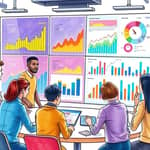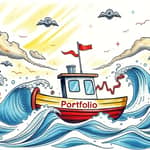
In today’s fast-paced world, staying informed about the latest personal finance trends is more critical than ever. From skyrocketing mortgage rates to innovative lending platforms, each day brings new opportunities and challenges for your wallet.
This daily news hub consolidates crucial developments—from emerging credit scoring models to digital banking breakthroughs—so you can make confident decisions and secure your financial future.
The popularity of Buy Now, Pay Later (BNPL) services has soared in 2025, reshaping how younger consumers manage expenses. Platforms like Affirm and Afterpay boast zero-interest payment structures that appeal to budget-conscious shoppers. Surveys predict over 90 million Americans will use BNPL this year, marking a seismic shift from traditional credit card reliance.
Despite this surge, many users miss out on credit score benefits when they pay on time. To bridge that gap, FICO introduced two new scoring models—Score Θ 10 BNPL and Score 10 T BNPL—which integrate BNPL data into credit assessments. By recognizing punctual payments, these models aim to foster greater financial inclusion for individuals lacking a conventional credit history.
As these scoring models roll out in late 2025, tracking your BNPL transactions and ensuring timely payments becomes essential. This simple habit could bolster your credit profile just as effectively as a traditional credit card.
Securing a home has become increasingly challenging with average 30-year fixed mortgage rates stuck between 6.6% and 6.9% since early 2025. This sticky rate environment reflects broader economic uncertainties and global trade tensions that keep borrowing costs elevated.
For prospective buyers and homeowners considering refinancing, timing is crucial. Market analysts advise keeping an eye on economic indicators—such as Federal Reserve statements and inflation reports—before locking in a rate. In the meantime, exploring alternative financing options or government-backed loans may ease upfront costs.
By staying informed daily, you can identify small shifts in rate forecasts that translate into significant savings over a 30-year term.
Financial literacy remains a major hurdle: only about 50% of Americans feel confident navigating budgeting, investing, and debt management. With inflation cited as the top worry, many households struggle to maintain savings while servicing rising debts, including student loans and credit card balances.
National surveys reveal that despite easier access to credit, savings rates have stagnated. A growing number of families report relying on high-interest products to cover everyday expenses. This cycle intensifies financial stress, reducing long-term wealth-building potential.
To break free, consider setting modest but consistent goals for emergency savings—aim for at least three months’ worth of expenses—and develop a clear debt-repayment plan using strategies like the avalanche or snowball method. Community workshops, free webinars, and budgeting apps can provide structured guidance and accountability.
Open banking and smart data initiatives have gained traction globally, with over 11 million UK citizens leveraging open banking services as of 2024. This framework empowers consumers to share financial data securely, fostering personalized product recommendations and competitive pricing.
Governments and regulators are expanding trust frameworks for digital verification—an evolution set to boost the UK economy by £4.3 billion in the coming decade. These advances pave the way for smarter budgeting tools, real-time expense tracking, and seamless payment experiences across multiple institutions.
By integrating multiple accounts and leveraging open banking, you can unlock deeper spending analytics and automated savings plans, making your financial routine both efficient and insightful.
Trusted personal finance media channels serve as invaluable resources for building financial knowledge. On YouTube, channels like MappedOutMoney and Your Money, Your Wealth offer engaging tutorials on budgeting, investing, and retirement planning. Podcasts and live webinars further personalize learning, allowing audiences to interact with experts in real time.
Pair these educational hubs with simple daily actions to reinforce your progress:
By making these steps part of your routine, you create a feedback loop where consistent learning drives informed decisions, and informed decisions build lasting financial resilience.
Your Personal Finance News Hub is here to guide you through each development, offering daily insights and practical tips that empower you to take control of your wallet. Keep returning for updates, and let every article be a stepping stone toward lasting financial well-being.
References













